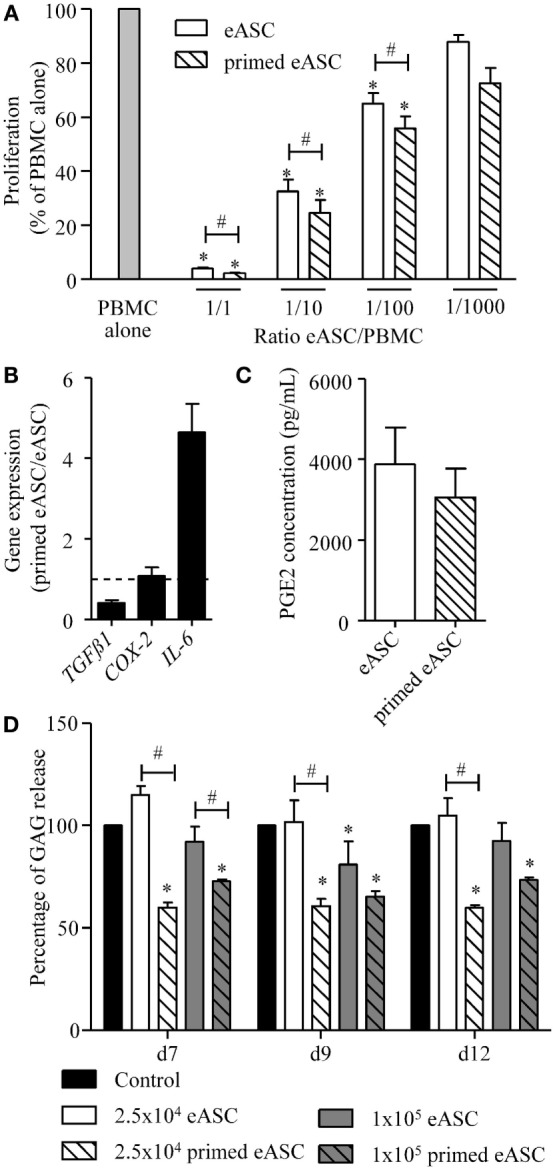Figure 2.

IFNγ-priming improves the immunosuppressive and chondroprotective properties of eASCs in vitro. (A) Proliferation of equine PBMCs in presence of naïve eASCs or IFNγ-primed eASCs at different ratios. Results are expressed as the percentage of PHA-induced proliferation of equine PBMCs, which was assigned the value of 100% and represented as mean ± SEM for three independent biological replicates. (B) Gene expression level of TGFβ1, COX-2, and IL-6 in eASCs. Gene expression in IFNγ-primed eASCs was normalized to that obtained in naïve eASCs. (C) PGE2 concentration in supernatants of naïve and IFNγ-primed eASCs. (D) GAG release quantification from cartilage explants incubated with IL1β (1 ng/mL) and Oncostatin M (10 ng/mL) during 7, 9, or 12 days and cocultured with or without 25,000 or 100,000 naïve and IFNγ-primed eASCs (100 ng/mL, 24 h before coculture). Results are expressed as the percentage of GAG release normalized to control condition (explant alone) at each time points and represented as mean ± SEM for 10–14 independent biological replicates. Data were analyzed using the Kruskal–Wallis test followed by Dunn’s test for multiple comparisons for (A, D) and using the Mann–Whitney test for (B,C) *p < 0.05 in samples versus PBMC alone (A) or control (D); #p < 0.05 between primed and unprimed samples.
